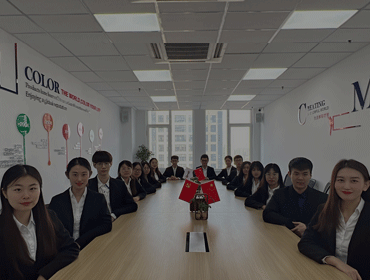In this colorful world, we see all kinds of colorful things, but where do we get our dyes? Is it the same as paint?Let's talk about it.
Our ancestors learned to dye clothes from a very early age.More than two thousand years ago, during the Spring and Autumn Period and the Warring States Period, people used comia to dye clothes.As comeygrass is rare, the material dyed with it is worth a hundred times as much.In order to show off their wealth, emperors and nobles made clothes of purple silk.This is where the saying "Chu Zi GUI of the dynasty" comes from.There are also detailed records of dyes and dyeing techniques in the Book Rites of Zhou.
Similarly, in order to obtain a little purple dye, the ancient Phoenicians had to dive into the deep depths of the Mediterranean Sea to collect whelks. From 8,000 whelks, they could only get 1 kilogram of purple dye.At that time, only emperors could afford to use this dye, so it was called "imperial purple".
In ancient times, people had to rely on the gift of nature to obtain dyes.It was not until 1857 that scientists invented the first synthetic dye, aniline violet, after continuous efforts.Later, artificial dyes such as indigo were synthesized successively.Synthetic indigo was very cheap and could be produced in large quantities, quickly replacing natural indigo.In 1897, India still had about 65,000 hectares of land devoted to the cultivation of indigo plants, but within a few years the plants had all but disappeared.
Today, the variety of synthetic dyes has reached tens of thousands of species, and formed a new science - "dye chemistry".Azo dyes are the most commonly used at present.There are many varieties of azo dyes, just like a beautiful rainbow. Red, orange, yellow and green, blue, indigo and purple are all available from dark to light.
Anthraquinone is another class of dyes, and an important one is alizarin, an orange-red, shiny crystal.It was originally extracted from the root of madder and was not mass-produced with anthraquinone until 1871.The famous reductive blue (formerly known as indanthrene blue) is a reducing dye, which was made in 1901.VAT blue is bright in color, washable and fast in the sun, so it is popular among people.The famous reactive dyes (also known as reactive dyes) react with fibers and are particularly washable.
Since most of today's synthetic dyes come from coal tar, it is no wonder that it is famously said that chemists can produce iridescent colours simply by putting their hands in dirty coal tar!
Are pigments and dyes the same thing
Both pigments and dyes are associated with colour, and many people think of them as "family".In fact, pigments and dyes are two very different things.They have different chemicals, different temperaments, and different uses.
Pigments are usually associated with paints.In addition to being used to decorate furniture, they are also widely used in industry. Many paints are inorganic, such as chalky powder -- calcium carbonate, lead white -- lead carbonate, red silver zhu -- mercury sulfide, black soot -- carbon, etc.Most gold pigments are insoluble in water, but they are so powerful that a new spray of paint on an old car gives it a new look and covers all traces of the old.Pigments are also used for painting with dyes, as raw materials for printing inks, and as colorants for rubber, plastics, enamel and paper.




